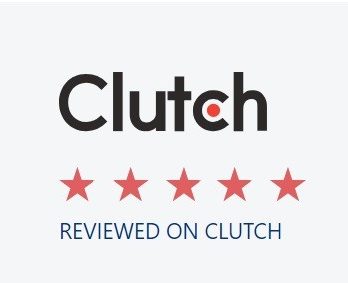As web and app development evolves at a breakneck pace, one challenging task that consistently presents itself is picking the ideal backend framework for your project.
Whether you’re a developer planning to streamline your process or trying to upgrade from your existing backend, you must choose a platform that combines functionality with advanced features. And that’s what we’ll discuss today.
Since choosing the wrong framework can lead to wasted time, resources, and, potentially, a less efficient product, you must decide smartly.
Therefore, we’ve listed the best backend frameworks for app and web development and explained what makes them great (or not-so-great).
If you’re to decide on a framework for your digital presence, read on to know which one to invest in!
Best Backend Frameworks for Web Development
Web development frameworks must support complicated data structures and heavy traffic flow. And based on that, here’s our list of the best backend frameworks for web development:
-
Django for Python
When we discuss web development with Python, Django is one of the first frameworks that likely comes to mind. Since its inception, Django has established itself as a dominant force in web development, favored by many developers for its pragmatic design.
Django’s motto is “The web framework for perfectionists with deadlines,” designed to help developers create robust, scalable, and secure web applications quickly and efficiently.
Here are some of its key features:
-
Complete and Robust Framework
Django is often called a “batteries included” framework as it comes with many functionalities right out of the box. It provides many functionalities that streamline the web development process, such as a robust Object Relational Mapping (ORM) system, user authentication, administration GUI, form handling, and more.
-
Effective Database Management
Django’s ORM can interact with your database as you would with SQL. So instead of writing SQL queries, you can use Python code to create, retrieve, update, and delete records in your database.
-
Scalability and Performance
Django can help you build applications that can scale to handle heavy traffic in production environments. Sites like Instagram and Pinterest use Django due to its ability to efficiently handle a large number of user requests per second. It’s also incredibly fast, as it can serve real-time requests, which is essential for modern web applications requiring high responsiveness.
-
Ruby on Rails (RoR)
Ruby on Rails is a powerful, full-featured web application framework that runs on the Ruby programming language. It first appeared in 2004 and has since carved out a substantial niche in the web development ecosystem.
Rails works on the philosophy of “Convention over Configuration” and provides a set of sensible defaults that allow developers to create applications quickly without having to write boilerplate code. Here’s what makes RoR a smart pick for web developers:
-
Convention Over Configuration
As touched on, one of Rails’ biggest advantages is its principle of Convention over Configuration. Rails assumes what you want to do and how you will do it rather than requiring you to specify every small detail through endless configuration files. This feature allows you to write less code and minimizes potential errors.
-
RESTful Architecture Support
Rails encourages the use of RESTful architecture in application design. REST (Representational State Transfer) is a standard architectural style for networked applications. It provides a way of mapping HTTP verbs (get, post, put, delete, etc.) and CRUD actions (create, read, update, delete) to controller actions, which in turn interact with the model to manipulate data.
-
Community and Gems
Rails has a large and active community that continually produces libraries called “gems,” which extend the functionality of Rails. When you need authentication, payment gateways, or APIs for popular services, there’s probably a gem.
-
Spring Boot for Java
Spring Boot, a project built on the Spring Framework, has taken the Java community by storm. Since it was introduced to tackle the complexity of Spring’s configuration, Spring Boot offers an accessible way to create stand-alone, production-grade Spring-based applications with minimal upfront configuration.
Here’s what makes Spring Boot a good option for web development:
-
Simplified Configuration
Spring Boot’s auto-configuration mechanism automatically provides configuration settings to quick-start new Spring projects. Eventually, it simplifies your codebase and development process, freeing you from the often daunting task of setting up a new project.
-
Embedded Server Support
Spring Boot comes with embedded servers like Tomcat, Jetty, and Undertow that eliminate the need for manual server deployment. That’s why you can run Spring Boot applications as stand-alone Java applications using the java -jar command.
-
Spring Actuator
Spring Boot includes Spring Actuator, which provides production-ready features like application health checks, metrics gathering, HTTP tracing, and others. When moving to production, these features are often necessary but can be a hassle to set up manually. With Actuator, these features are readily available and easy to configure.
Best Backend Frameworks for App Development
Best backend frameworks for app development emphasize usability and user-friendliness. Based on these parameters, here are the best frameworks for apps:
-
Flutter
Flutter is primarily known as a UI toolkit for building natively compiled mobile, web, and desktop applications from a single codebase. However, Dart, the programming language behind Flutter, can be used for both frontend (UI) and backend (logic and server-side) development.
Here are some impressive features of Flutter that take it to the front row:
-
High Performance
Flutter doesn’t rely on intermediate representations or the browser’s DOM (Document Object Model). Instead, it compiles directly into the native code, be it ARM or x86, ensuring a high level of performance. The Dart language is compiled ahead-of-time (AOT), improving app startup times, speed, and overall performance. The outcome is a slick, highly responsive user experience that feels genuinely native.
-
Hot Reload and Hot Restart
The Hot Reload and Hot Restart features in Flutter immensely help developers by injecting updated source code files into the Dart Virtual Machine (DVM) during development. The changes made in the code get reflected in the app directly, which means you can iterate quickly, fix bugs, and add features without losing the current application state.
-
Singular Codebase
Flutter uses a single codebase for creating applications across multiple platforms such as iOS, Android, Web, and Desktop. This aspect saves time and ensures consistency across various platforms, reducing potential errors or discrepancies.
-
React Native
React Native is a popular open-source framework created by Facebook for building mobile applications. Its claim to fame is the ability to write in JavaScript, one of the most commonly used programming languages, while still offering a truly native user interface.
Now, onto the meaty bits of React Native:
-
Truly Native Experience
React Native’s mantra is “Learn once, write anywhere.” Unlike some other cross-platform frameworks that use Web views, React Native produces a truly native user interface. It results in improved performance and a look and feel consistent with the platform’s standards.
-
Shared Codebase
React Native’s ability to use the same code for deploying on both iOS and Android platforms makes it an excellent choice for app development. This significantly reduces the time and resources needed to develop separate platform applications.
-
Hot and Live Reloading
Hot and Live reloading features in React Native make the process of developing, testing and seeing the changes you make in the code almost instantaneous. Hot reloading applies changes without refreshing the whole app, while live reloading refreshes the app every time a file is saved.
In A Word
When choosing a backend framework for web and app development, you must consider the functionality, ease of use, and community support that it offers. Each framework we have listed above provides unique advantages tailored to different project needs and development styles.
The strength and vibrancy of their communities further underscore their longevity and reliability in the ever-evolving tech industry. Since a well-chosen framework can significantly influence the success and maintainability of your web application, it’s worth spending time to evaluate your options and make an informed decision.
Get in touch with the experts to learn more.







